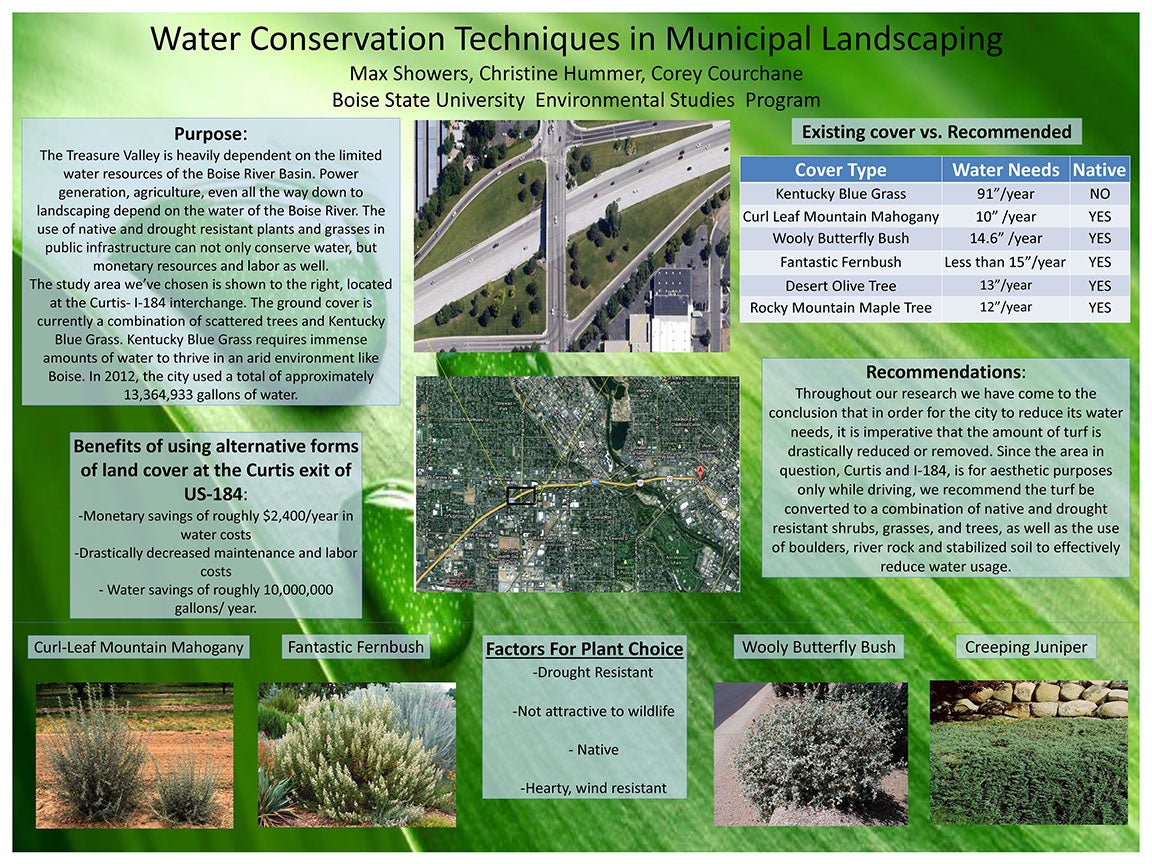Water Conservation Techniques in Municipal Landscaping

Max Showers, Christine Hummer, Corey Courchane
Boise State University Environmental Studies Program
Purpose
The Treasure Valley is heavily dependent on the limited water resources of the Boise River Basin. Power generation, agriculture, even all the way down to landscaping depend on the water of the Boise River. The use of native and drought resistant plants and grasses in public infrastructure can not only conserve water, but monetary resources and labor as well. The study area we’ve chosen is shown to the right, located at the Curtis- I-184 interchange. The ground cover is currently a combination of scattered trees and Kentucky Blue Grass. Kentucky Blue Grass requires immense amounts of water to thrive in an arid environment like Boise. In 2012, the city used a total of approximately 13,364,933 gallons of water.
Benefits
Benefits of using alternative forms of land cover at the Curtis exit of US-184:
- Monetary savings of roughly $2,400 / year in water costs
- Drastically decreased maintenance and labor costs
- Water savings of roughly 10,000,000 gallons / year.
Factors for Plant Choice
- Drought resistant
- Not attractive to wildlife
- Native
- Hearty, wind resistant
Existing Cover vs Recommended
- Kentucky Blue Grass needs 91″ water per year and is not native
- Curl Leaf Mountain Mahogany needs 10” water per year and is native
- Wooly Butterfly Bush needs 14.6” water per year and is native
- Fantastic Fernbush needs less than 15” water per year and is native
- Desert Olive Tree needs 13” water per year and is native
- Rocky Mountain Maple Tree needs 12” water per year and is native
Recommendations
Throughout our research we have come to the conclusion that in order for the city to reduce its water needs, it is imperative that the amount of turf is drastically reduced or removed. Since the area in question, Curtis and I-184, is for aesthetic purposes only while driving, we recommend the turf be converted to a combination of native and drought resistant shrubs, grasses, and trees, as well as the use of boulders, river rock and stabilized soil to effectively reduce water usage.